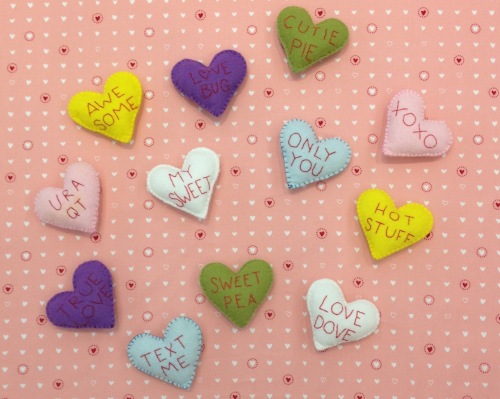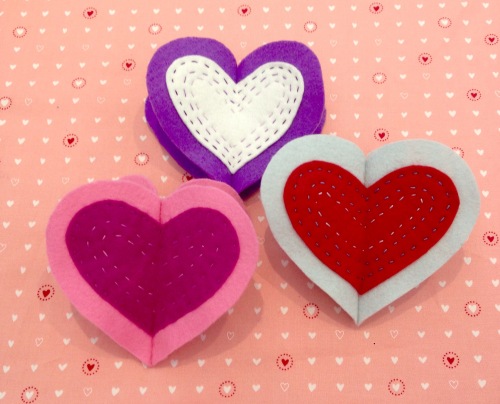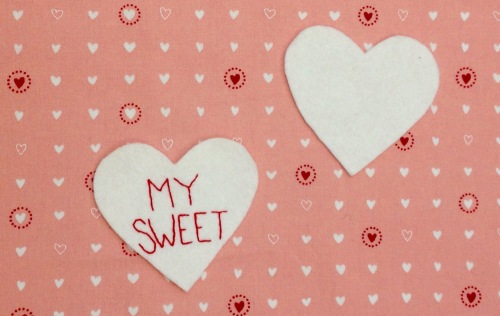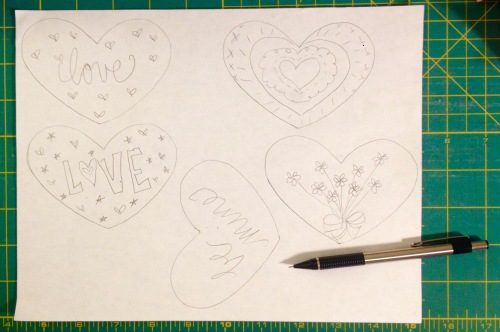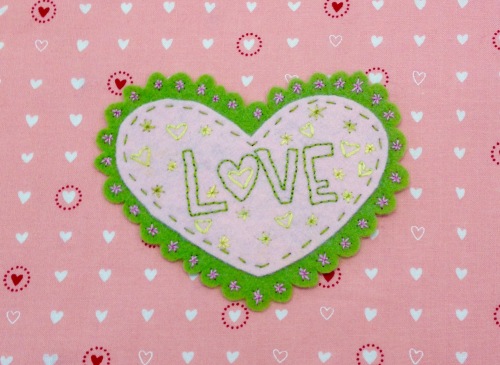We are having a blast with Me-Made-May! It is so much fun to see the sewing community sharing their makes, everyday, and even more fun to partake.

This is a loooonnnng post, so without further ado, here is a round-up of Nancy’s staff during the first twelve days of Me-Made-May!
Day 1:
Helping us kick off the event, Kitrina wore a tunic made with KwikSew pattern #3601. She sewed it up in polyester georgette featuring multi-colored polka dots!
Jessica wore a modified version of her favorite Decades of Style pattern, #2003 1920s Hazel’s Frock. She used the skirt-scarf pattern from the original look inserted in the side seams to create a handkerchief hem and sewed the dress from a rayon/nylon blend with fabulous drape.
Day 2:
Ellen wore a linen jacket made from a now-discontinued Butterick pattern. The style has handy patch pockets and a cool, draped lapel that features the selvedge of the fabric! For a similar look, try McCall’s #7200.
Day 3:
Tamara wore a silk crepe-de-chine skirt and knit top with a modified neckline. The original skirt pattern, now discontinued from Vogue patterns, boasts a full circle silhouette on a yoke; luckily, KwikSew #3637 is currently available and very similar! Tamara used KwikSew #3766 for the top, modifying the neckline to a bateau.
For the third day, Jessica wore a blouse made of printed silk crepe-de-chine, made from Decades of Style pattern #5003, the 1950s Collar Confection blouse. This blouse style has a sweet draped collar and shaped, vented short sleeve.
Day 4:
On May the fourth, Tamara wore her Given a Chance dress, pattern #102 from Decades of Style‘s microline Decades Everyday! She sewed up the dress in a Japanese cotton dobby, featuring pixelated renditions of Japanese landmarks. You may recognize the dress from our post on spring clothes made with Decades of Style patterns.
Kristina wore her newly finished bias-cut Tedra skirt, made from 1″ black & white cotton gingham and bound at the hem with red bias tape. The skirt pattern is from the book Everyday Style by Lotta Jansdotter. We mentioned this skirt in our Planning for MMMay16 post, as a project Kristina was working on. Way to go, Kristina!
Jessica wore Decades of Style pattern #5008, the PB&J skirt. This 1950s style features bias-cut side panels, double pleats, and nautical button detailing. Jessica used a striped polyester/rayon/spandex suiting to enhance the alternating grainlines and added vintage German glass buttons for extra flair. Ahoy!
Day 5:
Kitrina wore a modified version of the same KwikSew tunic, this time featuring a hi-lo hemline and princess seams. Her fabric choice, a floral print polyester georgette, looks perfectly breezy in the modified silhouette!
Ellen wore a swingy tunic, sewn up in a rayon/linen blend. She used Butterick pattern #6099, which features inverted pleats at the bust, a functional button placket, and collar variations.
Kristina wore an easy a-line skirt, Vogue pattern #9063. She sewed up the pattern in a lovely printed cotton lawn, similar in hand to Liberty’s Tana lawn, but priced much more accessibly!
Jessica wore her version of the Three’s a Charm jacket, pattern #103 from Decades of Style! Made in a Japanese printed cotton/linen canvas, this easy-to-make and easier to wear third piece features stylized darts in a cute silhouette! Learn more about this jacket, and see a second sample, over here!
Day 6:
Tamara wore a handmade ensemble on the sixth. Her coat comes from the Japenese pattern book Happy Handmade Sew Chic by Yoshiko Tsukiori and she worked it up in a soft linen. The skirt was patterned off a store-bought style; she layered a beautiful black border lace over an Anna Maria Horner printed cotton broadcloth for an elegant, but easy wardrobe addition. For a similar skirt style, try KwikSew pattern #3877.
Jeannie wore a silk plaid dupioni wrap skirt, made with McCall’s #5430, and carried two handmade bags! The larger, striped canvas bag is from Lotta Jansdotter’s book Everyday Style. Her green ultrasuede bag is the Hatoto pattern from the blog Yoshimi the Flying Squirrel.
Day 7:
Rounding out the first week, Ellen wore the Gallery Tunic from Liesl & Co. She sewed it up in a soft cotton plaid broadcloth.
Day 8:
On Mother’s Day, Kitrina looked incredibly lovely in an ensemble from Decades of Style. Her printed silk blouse is pattern #2502, the 1952 Wrap Blouse, which features a true wrap front and two buttons at the yoke. Enhancing the style is pattern #4006, the 1940s Arches Skirt, which she sewed up in wool twill.
Kristina wore her go-to straight skirt pattern, McCall’s #3830. She used a cute novelty print (Mice on Bikes from Lizzy House) and bound the hemline in contrasting turquoise bias tape.
Jessica wore her other favorite Decades of Style pattern: Decades Everyday #101, the E.S.P. dress! The dress is a classic fit-and-flare style with raglan sleeves and she’s made it many times. This version was made with Liberty Tana lawn; read more about it on her blog post!
Day 9:
Ellen donned a great jacket on the ninth day: Pearl from Sewing Workshop. This style features an easy silhouette with drawcord detail at the neckline for the addition of ruching. She used a lightweight polyester, making this the perfect casual spring jacket.
Day 10:
Tamara wore an easy blouse featuring a keyhole neckline with tie closure and deep side vents, which she made from printed silk crepe-de-chine. She also wore a ponte knit skirt, modeled after a store bought style. Sadly, the original Vogue blouse pattern is now discontinued; for a similar look, try McCall’s #7248 or Kitrina’s favorite tunic style, KwikSew #3601.
On the tenth, Jessica wore her inspired by the runway dress. Modeled after a Bottega Veneta style that retailed for $11,000, her version features lace layered over a digital print rayon challis and geometric lace trim at the armhole. She used Burda pattern #6914 to achieve the silhouette with a gentle cocoon shape.
Day 11:
Tamara wore a dress made with a border print cotton lawn. In cutting out the pattern (Vogue #8876), she found she didn’t have quite enough of the print to construct the dress with the border running along the hemline. Ingeniously, Tamara reworked the pattern and achieved a very cool look!
Ellen had plans to attend a Seattle Mariner’s game after work, so she showed off her team spirit and her sewing skills, by wearing a blouse constructed in cotton lawn, boasting the M’s colors! She used Vogue #8927 for this easy-going great shirt.
Kristina wore a self-drafted a-line skirt, sewn up in lovely, easy-to-wear rayon/linen. Try McCall’s #7197 for a similar pattern!
Jessica also wore a self-drafted skirt, this time a dirndl silhouette, featuring an embroidered-border calico cotton. For a similar pattern, try KwikSew #3794.
Day 12:
On the twelfth day, Ellen wore Anne Klein tunic pattern #1509 from Vogue. She sewed it up in a printed cotton double gauze, proving this style looks good in casual and dressy fabrications!
Kristina wore two patterns from Lotta Jansdotter’s Everyday Style. She shorted the Kiomi dress pattern into a tunic length and sewed it up in rayon challis for the perfect breezy summer top. She used washed cotton ticking to make the Owyn pant pattern, for a casual pant style.
Jessica wore a jacket of her own design that she originally created for the Great Jacket Challenge of 2009. The challenge was performed by the staff at Nancy’s for our 31st Anniversary Sale, wherein participating staff used Vogue pattern #1036 (now discontinued) as a base to make a jacket of their choosing. Jessica’s version, with a high-peplum waist and double-breast closure, was constructed of boldly striped cotton canvas.
Wow – that was a long round-up! If you made it this far, thanks for sticking it out until the end! We are sharing our me-made-makes everyday on our Instagram (you can find them directly here), if you would like to see them on the daily. Our next round-ups won’t be nearly this extensive, but just as enjoyable! See you next time!










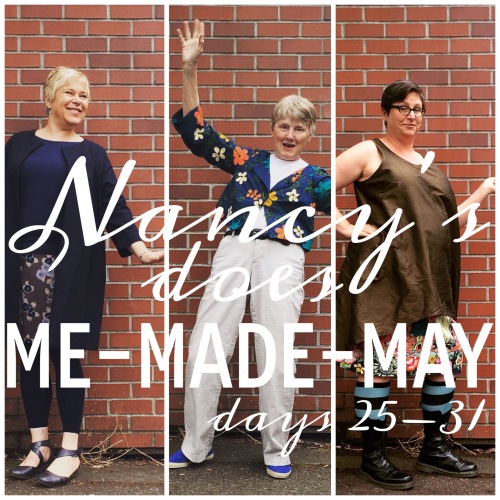























































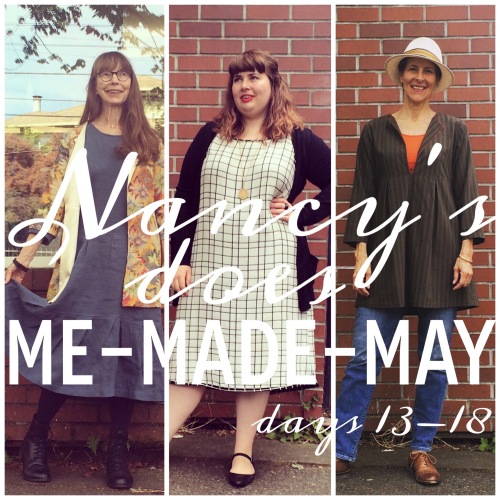








































































 Working in a rich red color palette, Izzie selected millinery roses & berries, vintage ribbon, and veiling for trimmings.
Working in a rich red color palette, Izzie selected millinery roses & berries, vintage ribbon, and veiling for trimmings.  She created a wide, layered bow from the ribbon as a base, formed a second bow from the veiling, and then nestled the roses and berries into the center of the bows.
She created a wide, layered bow from the ribbon as a base, formed a second bow from the veiling, and then nestled the roses and berries into the center of the bows.  The resulting look is bold and lush, without going over-the-top.
The resulting look is bold and lush, without going over-the-top. To enhance the cheery hue, Izzie chose trimmings in sunny tones, including picot-edge vintage ribbon, leaves, and two styles of flowers.
To enhance the cheery hue, Izzie chose trimmings in sunny tones, including picot-edge vintage ribbon, leaves, and two styles of flowers.  She began by encircling the base of the crown with the ribbon and tying it into a multi-looped bow. After arranging the flowers and leaves, she affixed them atop the bow.
She began by encircling the base of the crown with the ribbon and tying it into a multi-looped bow. After arranging the flowers and leaves, she affixed them atop the bow.  The final look is a sweet and simple monochrome topper, perfect for wearing indoors or out!
The final look is a sweet and simple monochrome topper, perfect for wearing indoors or out!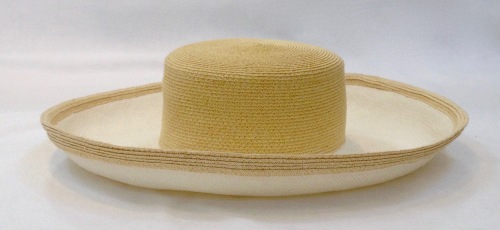 In keeping with the color palette provided by the two straws, Izzie selected trimmings with a neutral feel.
In keeping with the color palette provided by the two straws, Izzie selected trimmings with a neutral feel.  Green leaves, little mushrooms, pale yellow black-eyed susans, and a brown poppy all lend to a more natural look.
Green leaves, little mushrooms, pale yellow black-eyed susans, and a brown poppy all lend to a more natural look.  The final arrangement is chic and modest, and would look at home at a derby party, a garden party, or rowing a boat on a sunny summer afternoon.
The final arrangement is chic and modest, and would look at home at a derby party, a garden party, or rowing a boat on a sunny summer afternoon.








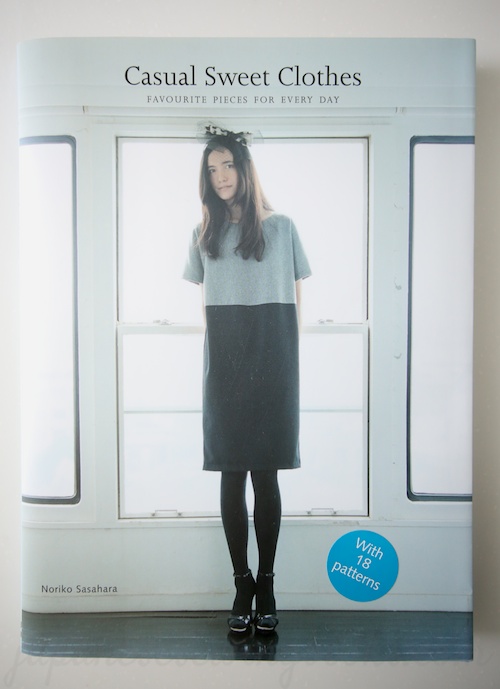 Ellen is using a woven linen/cotton Ikat to make the round-neck coat with turn-up cuffs.
Ellen is using a woven linen/cotton Ikat to make the round-neck coat with turn-up cuffs.













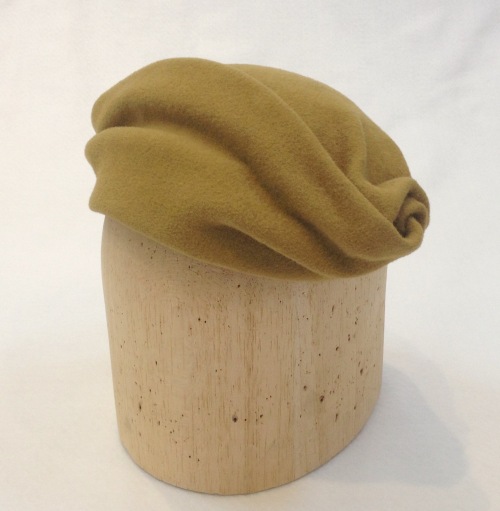





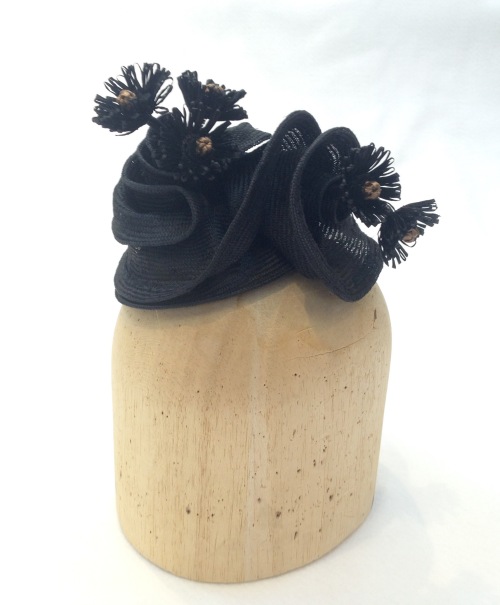

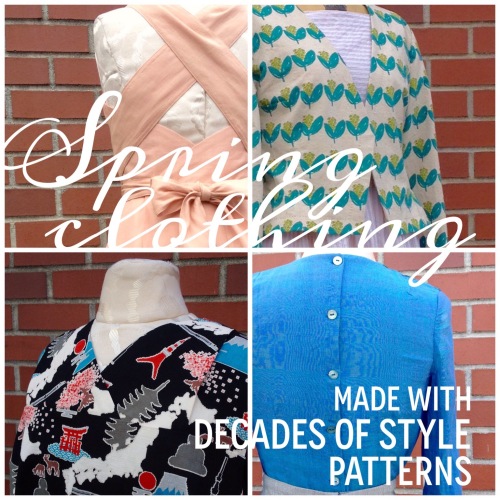 All of our Decades of Style samples look so wonderful we want to share them with everyone! Check out all our makes below.
All of our Decades of Style samples look so wonderful we want to share them with everyone! Check out all our makes below.



















